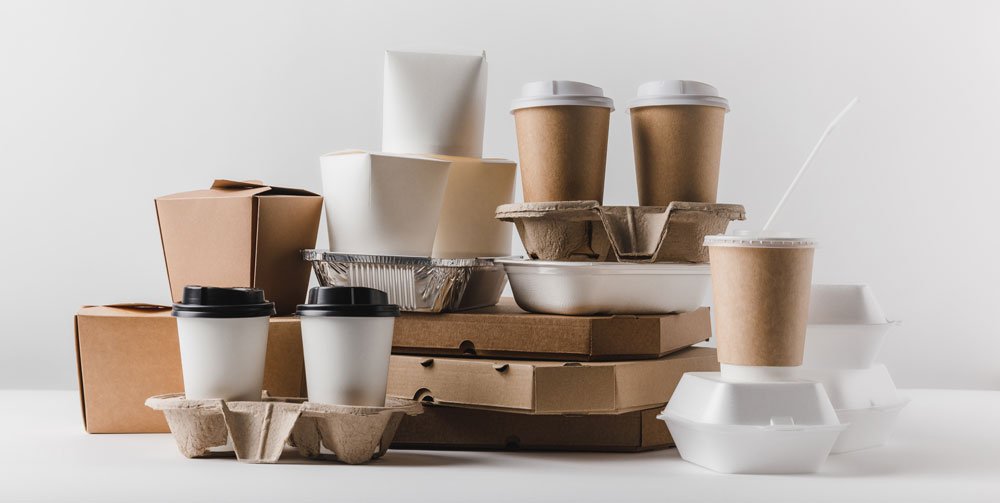Food packaging is not just a pretty wrapper that protects and displays the product. It is a critical component for ensuring the safety and quality of the food we eat. In fact, food packaging plays a vital role in preventing contamination, preserving freshness, and extending shelf life.
Imagine a world without packaging. Fruits and vegetables would be bruised and damaged by the time they reach the supermarket shelves. Meat and poultry would be exposed to bacteria and spoil quickly.
Even non-perishable items like cereal and chips would go stale and lose their crunch. Packaging serves as a protective layer, keeping food fresh and safe for consumption.
Furthermore, the packaging is also important for branding and marketing. Eye-catching and attractive packaging can grab the attention of consumers and make them more likely to purchase a product.
It can also convey important information such as nutritional value, ingredients, and allergen warnings. Without proper packaging, our food supply chain would be compromised, and we would be putting ourselves at risk of consuming unsafe and contaminated food.
So next time you reach for a snack or a meal, remember that the packaging is not just there for show – it’s an essential part of ensuring that the food inside is safe, fresh, and delicious.
Choosing The Right Food Packaging Material: Factors To Consider

Below given is the curated list of the key factors to consider when selecting food packaging material-
1. Safety:
The safety of the packaging material is of supreme importance when it comes to food. The material should not interact with the food in a harmful way, and it should not release any harmful substances into the food. Additionally, the packaging material should be able to protect the food from contamination by microorganisms, such as bacteria and fungi.
2. Shelf Life:
The shelf life of food is another important consideration. The packaging material should be able to preserve the quality and freshness of the food for as long as possible. This can be achieved by selecting a material that is resistant to oxygen, moisture, and light, which can cause the food to spoil or degrade over time.
3. Sustainability:
With increasing concerns about the environmental impact of packaging, sustainability is becoming a key factor in material selection. Consider choosing packaging materials that are recyclable, compostable, or made from renewable resources. Additionally, packaging that is lightweight and efficient can help to reduce transportation and energy costs.
4. Cost-Effectiveness:
The cost of the packaging material is also an important consideration. The material should be cost-effective and fit within the budget of the product. In some cases, a higher initial cost may be justified if it results in longer shelf life, improved safety, or reduced environmental impact.
5. Functionality:
Finally, the functionality of the packaging material should be considered. It should be easy to use, handle, and store. Additionally, the material should be compatible with the production and distribution process, and it should be able to withstand any necessary processing or handling.
Food Packaging Regulations & Standards
When it comes to food packaging, regulations, and standards are critical to ensure that the products we consume are safe and of high quality.
These food industry regulations and standards are in place to protect consumers from potential health risks and ensure that packaging materials do not negatively impact the food they contain. Here are some of the most important regulations and standards related to food packaging-
1. Food & Drug Administration (FDA) Regulations:
The FDA regulates food packaging materials under the Federal Food, Drug, and Cosmetic Act. The FDA ensures that food packaging materials are safe and appropriate for their intended use and that they do not transfer harmful substances to the food.
2. European Union (EU) Regulations:
The EU has regulations in place for food contact materials, including packaging. The EU has established a positive list of authorised substances that can be used in food packaging, and packaging materials must comply with specific migration limits.
3. Good Manufacturing Practices (GMPs):
GMPs are a set of guidelines that outline the manufacturing processes for food packaging materials. They include standards for hygiene, quality control, and documentation to ensure that packaging materials are produced in a consistent and safe manner.
4. International Organization For Standardization (ISO) Standards:
The ISO has several standards related to food packaging, including ISO 22000 for food safety management systems and ISO 9001 for quality management systems. These standards provide guidelines for the production, handling, and storage of food packaging materials.
5. Hazard Analysis & Critical Control Points (HACCP):
HACCP is a food safety management system that pinpoints potential dangers in the food production process and outlines critical control points to prevent contamination. HACCP can be applied to food packaging materials to ensure their safety and quality.
The Impact Of Food Packaging On Shelf Life & Freshness
Food packaging has a significant impact on the shelf life and freshness of food. Here are some ways in which packaging affects food quality-
1. Protection From Oxygen:
Oxygen is a major contributor to food spoilage, as it can cause the breakdown of fats, proteins, and carbohydrates. Packaging materials that are oxygen-barrier, such as certain plastics and metalized films, can help to extend the shelf life of food by limiting the amount of oxygen that comes into contact with the food.
2. Protection From Moisture:
Moisture can also contribute to food spoilage, as it can create an environment for bacterial growth and mold. Packaging materials that are moisture-barrier, such as aluminum foil and laminated films, can help to keep food dry and extend its shelf life.
3. Protection From Light:
Light can cause chemical reactions in food that can lead to discoloration, off-flavors, and nutrient degradation. Packaging materials that are opaque or contain UV absorbers can help to protect food from light and maintain its quality.
4. Controlled Atmosphere Packaging:
Controlled atmosphere packaging (CAP) involves modifying the air composition around the food in the packaging to slow down the rate of spoilage. This can be achieved by using vacuum packaging or adding gases such as carbon dioxide or nitrogen. CAP can significantly extend the shelf life of food.
5. Freshness Indicators:
Some packaging materials include freshness indicators, such as time-temperature indicators or gas indicators, that provide information about the freshness of the food. This can help consumers to determine when the food is still safe to eat and when it should be discarded.
Innovations In Food Packaging: Trends & Future Developments
Innovations in food packaging are constantly evolving, with new trends and developments emerging all the time. Here are a few of the most latest trends and future developments in food packaging-
1. Sustainable Packaging:
There is an increasing demand for sustainable packaging ways that reduce waste and minimize environmental impact. This includes the use of biodegradable materials, recyclable materials, and reusable packaging.
2. Active Packaging:
Active packaging refers to packaging materials that are designed to interact with the food inside the package to extend its shelf life and maintain its quality. This includes the use of oxygen absorbers, moisture absorbers, and antimicrobial agents.
3. Smart Packaging:
Smart packaging involves the use of technology to provide consumers with additional information about the food, such as nutritional content, ingredient information, and expiration dates. This can include QR codes, RFID tags, and other digital technologies.
4. Edible Packaging:
Edible packaging materials, such as films made from seaweed or other natural materials, are being developed as a sustainable and waste-reducing alternative to traditional packaging. These materials are safe for consumption and can help to reduce the amount of packaging waste generated.
5. 3D printing:
3D printing technology is being used to create customised packaging solutions that are tailored to the distinct needs of a particular food product. This can include packaging that is designed to fit the food precisely or packaging that includes unique features such as built-in compartments for sauces or other condiments.
The Role Of Branding In Food Packaging
Branding plays a critical role in food packaging, as it helps to differentiate a product from its competitors and communicate its unique value proposition to consumers. Here are some ways in which branding impacts food packaging-
1. Brand Recognition:
A strong brand helps consumers to recognize and identify a product quickly and easily. This can be achieved by using distinctive logos, colors, and other branding elements on the packaging.
2. Product Differentiation:
In a crowded marketplace, a strong brand can help a product stand out and differentiate itself from competitors. This can be achieved through unique packaging designs, messaging, and product features.
3. Emotional Connection:
Brands that establish an emotional connection with consumers can create a sense of loyalty and trust. This can be achieved through messaging that resonates with consumers’ values and aspirations, as well as through packaging that conveys a sense of quality and authenticity.
4. Premium Positioning:
Strong branding can help a product to be positioned as a premium or high-quality offering, which can justify a higher price point. This can be achieved through premium materials, sophisticated designs, and messaging that communicates the product’s unique value proposition.
5. Consistency:
Consistent branding across a product line can help to create a sense of coherence and unity, making it easier for consumers to understand and navigate the product offerings. This can be achieved through consistent packaging designs, messaging, and branding elements.
Common Food Packaging Mistakes & How To Avoid Them
1. Using The Wrong Packaging Material:
Different food products require different types of packaging materials to maintain their quality and safety.
For example, oxygen-sensitive foods require packaging with high oxygen barrier properties, whole foods with high moisture content require packaging with high moisture barrier properties.
It is important to choose the right packaging material for each product to avoid spoilage and contamination.
2. Improper Sealing:
A proper seal is critical to prevent contamination and ensure the freshness and quality of the food product. Improper sealing can occur due to improper packaging machine settings, low-quality packaging materials, or human error. It is important to regularly check the seals on the packaging and adjust machine settings as necessary to ensure a proper seal.
3. Inconsistent Packaging:
Inconsistent packaging can create confusion for consumers and undermine brand recognition. It is important to maintain consistency in packaging design, size, and branding elements across all product lines to create a cohesive and recognizable brand.
4. Lack Of Transparency:
Consumers today are increasingly concerned about food safety and want to know what ingredients are in their food products. It is important to provide clear and accurate information about the ingredients, nutritional content, and allergen information on food packaging to build consumer trust and satisfaction.
Conclusion
Proper packaging for food products is essential to ensure their safety, quality, and shelf life. The right packaging can protect food from contamination, prevent spoilage, and maintain its freshness and flavor.
Additionally, packaging plays a critical role in branding and marketing food products, helping to differentiate them from their competitors and communicate their unique value proposition to consumers.
It’s important to consider the factors that impact food packaging, such as regulations, material selection, and the use of innovative technologies. By avoiding common packaging mistakes and investing in proper packaging, food manufacturers can create products that are not only safe and high-quality but also appealing and compelling to consumers.



